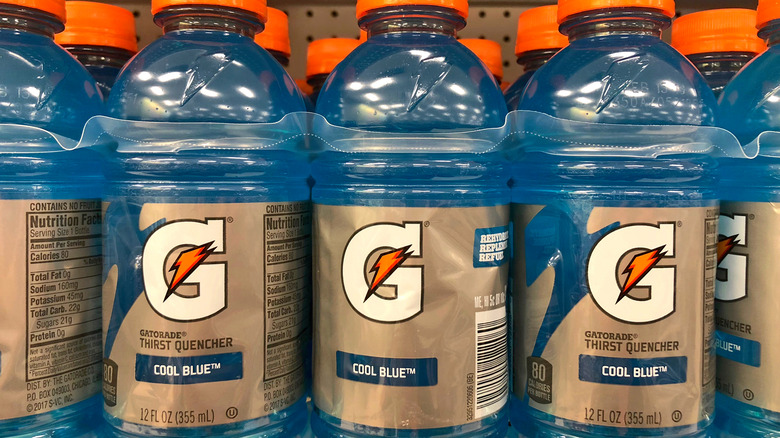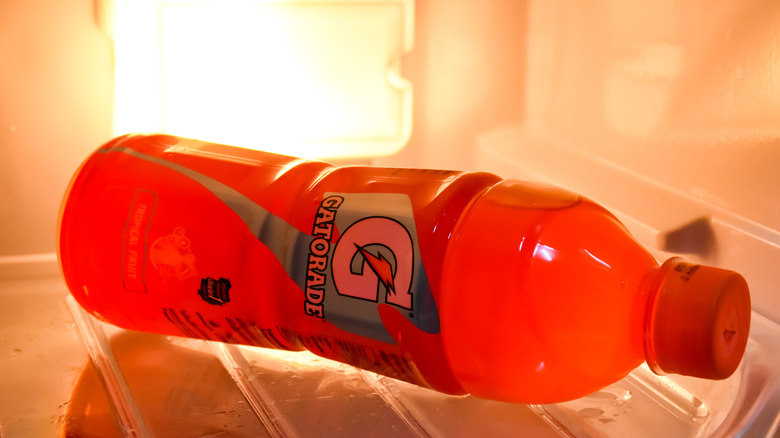TikToker Is Giving A Behind The Scenes Look At How Gatorade Is Really Made
Whether you're shooting hoops on the basketball court, training for a football game, or mountain biking with friends, that reusable bottle of yours is probably filled with one of two drinks — water or Gatorade. With a dominating 67.7% hold on the US sports drink industry, per Beveragedaily.com, it's no wonder this neon-colored, electrolyte-charged drink is everywhere. But what exactly is all the rage behind the 'Rade?
According to the Gatorade website, the drink was created in 1965 as a solution to the problem of dehydration among athletes at the University of Florida. Kidney specialist, Dr. J. Robert Cade, along with a team of university researchers, developed the sports drink with the intent of providing a refreshing way to replace lost carbohydrates and electrolytes in athletes.
The first batch of Gatorade was described as "vile" and made the test subjects sick, but when Cade's wife suggested the addition of lemon juice and artificial sweetener, the drink began to increase in both taste and popularity (via Los Angeles Times).
While the Gatorade-making process is surely much different than it was 56 years ago, it's not a subject people typically chat about. One TikTok user, however, has enlightened social media on how Gatorade is made, making for interesting water-cooler talk, and shedding new light on the flavored electrolyte drinks.
Gatorade is made with heat
Have you ever sipped a Gatorade that's been sitting in your car after a hot day? It pretty much tastes like hot, sugary water and according to TikToker German Lopez, that's not too far off from how the energy drink is actually made. One of his trending TikToks shows a Gatorade bottle being pulled off a production line and dumped into a sink. The red liquid is shown steaming as it pours from the plastic bottle. Commentators on the video displayed a combination of disgust and amazement at the sight, and some offered a little humor, too.
"Great straight into plastic bottles for enhanced microplastic consumption," said one commentator. Summing up the revulsion of many viewers, however, is the top comment, "Red dye, boiling Hot, in plastic... I needed this knowledge." Another video posted by Lopez shows — what some commentators speculate is — a "cap jam" in the production line. You can see the steam and plastic bottles pouring out into a pail, further demonstrating the intense heating process.
But before you dump out your Gatorade, according to Lopez and a few scientifically-minded viewers, this heating process is a standard procedure. "It's actually pasteurized temperatures to keep from all toxins and then cooled after," said Lopez. The same pasteurization process is done for milk, which helps to kill off bacteria and prolong the drink's shelf life (via Undeniably Dairy).

